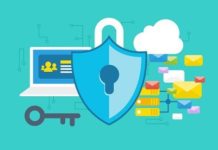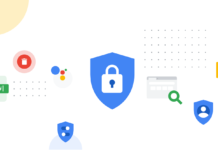Currently one of the biggest challenges facing most industries is the issue of cybersecurity for the remote workforce. The inception of digital office spaces and the lack of brick and mortar work-space has been both a blessing as well as a curse for most companies. It was a paradigm shift industry experts were predicting, but one that would have been, under normal circumstances, gradual — 2020, and its brother year, 2022, was everything but normal. What would have taken years, and time to perfect, ended up occurring overnight. Teams had no other choice but to scramble and grab at what they had at their disposal. This has led to chaos and uncertainty when it comes to most companies’ firewalls and digital fortifications. In this article, we’ll fill you in on cybersecurity tips for remote workers and how to scale up your business while minding the data bank.
Remote working today
Before COVID and the upsurge of remote working, more than 7 million Americans were already doing their job offsite. That wasn’t so much, in the grand scheme of things, only 3.4 percent of the population. Everything changed, and, by the end of the year, more than 80% had made the transition.
That was a massive increase and one that created a huge amount of challenges and growing pains for most companies. One of the biggest ones was fortifying their company against digital criminals and cybersecurity threats.
Cybercrime is on the rise
2020 was a gangbuster year for cybercriminals, one of the biggest in history. Why? For multiple reasons.
– Unemployment: unemployment rates skyrocketed not only in the US but in regions already known for their leniency with cyber hoodlums. There are nations around the world that not only have little to no oversight on their citizen’s digital practices but actually encourage their criminal activities.
– Remote working: millions of companies had no other choice but to adapt their current practices in the blink of an eye. Folks simply left the office one day, and never came back. They had no other choice but to make the plunge and keep their company going with the tools they had on hand — flying by the seat of their pants. Out of nowhere, the net exploded with data access points with no protection. It was, for cybercriminals, as if the world – overnight – had decided to simply let them in. To open up all their houses and unlock all their doors, and do a block party.
– Bottleneck: companies had no other recourse, they had to survive, they started using protocols or tools that had long ago become obsolete. And those companies that were already aware of the need for outside help, of acquiring a security as a service specialist, suddenly found that those consultants were swamped with too much work.
Top 5 cybersecurity challenges in the remote workforce
Your company will have a mountain of possible security threats, that’s why tools like SIEM solutions and log management amongst so many are important, here are the top cybersecurity threats you’ll need to watch out for.
Establishing Secure Access
How many gadgets do you personally own that have access to the net? How many of those do you use to access sensitive information? How many of them do you have that are constantly hooked up to WiFi connections that aren’t your own, or encrypted?
Now, multiply that number by how many employees, third-party vendors, and access points your company has.
All those “gates” need a secure access protocol.
Securing Personal Devices
The reality is that even if you give your staff protected, encrypted devices, hardware to do their job, they will still use their own personal tools.
Studies have shown that over 80% of employees are most likely to use their own devices, instead of the ones supplied by their bosses. There are multiple reasons. Including the fact that they feel more comfortable with these gadgets.
It’s important to take this into account and invest in securing your staff’s personal devices.
Employees
93% of breaches are a direct result of human error or carelessness in terms of cybersecurity for remote employees. The platforms you use, the digital tools and services you employ, are being constantly updated by their makers. These updates, more than 80%, carry new and improved security measures. On that end of the spectrum, as long as you switch on automatic updates, your company is covered. Google, Apple, Slack, Microsoft, and most other tech’ giants have serious hardware and resources dedicated to cyber-security. You will occasionally hear about a hiccup in their systems or a breach, but generally, they rarely occur — and, due to new tech and software, they are becoming even rarer.
Meanwhile, your employees can’t be updated as easily. You can’t download a patch and simply switch on a new feature within their mainframe. Your staff needs to be aware of the risks they take. They need to understand your protocols, your criteria, and the consequences of a faux-pass on their part.
Securing Endpoint Security
Endpoint security refers to protecting and firewalling end-user or customer entry points. Creating a “border crossing” as it were between another person’s mobile device, laptop, or desktop and your organization’s mainframe.
Most users or customers that access your platform need to be quarantined. You have no idea where their digital selves have been. Sometimes, they might be carrying in a pathogen or a parasite and be completely unaware of it. You still have to give them some access, or service, you still have to sell to them your product, you simply can’t give them complete entry to your mainframe — you have to sandbox them and finalize your commercial trade in that sterilized environment.
Preventing Data Loss
Most businesses, no matter how staunch, no matter how robust, no matter how fortified, will eventually have a breach. SOC teams are there to prevent that breach, but it will happen. They will vaccinate you, and give you a better chance of waiving them off — or managing them so they don’t become a full-blown cyber attack.
Nonetheless, it will happen.
When that occurs, you will need to get your business up and running as soon as possible. Here is where data backup comes in place. Most businesses don’t have a regular data backup plan, for that matter, most individuals don’t either. You need to regularly, at least once every 24 hours, make a secure off-site backup of your whole system. That way, if you’re attacked, you can get back on track as soon as possible and mitigate revenue losses.
Biggest cybersecurity tip for remote workers
The biggest tip on cybersecurity for remote workers we can give you is — change the mindset. Understand that the paradigm has shifted. That your business has new challenges and that they need to be faced by your whole staff. Consult a cybersecurity team if you’re feeling overwhelmed by your new reality, let them advise, and analyze your posture.








